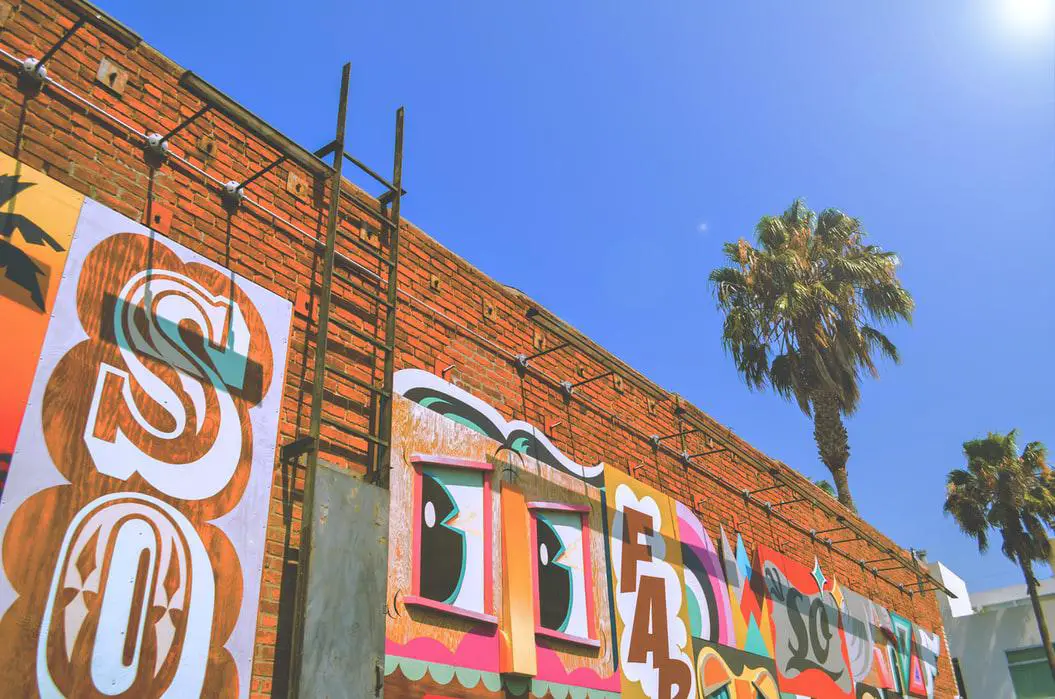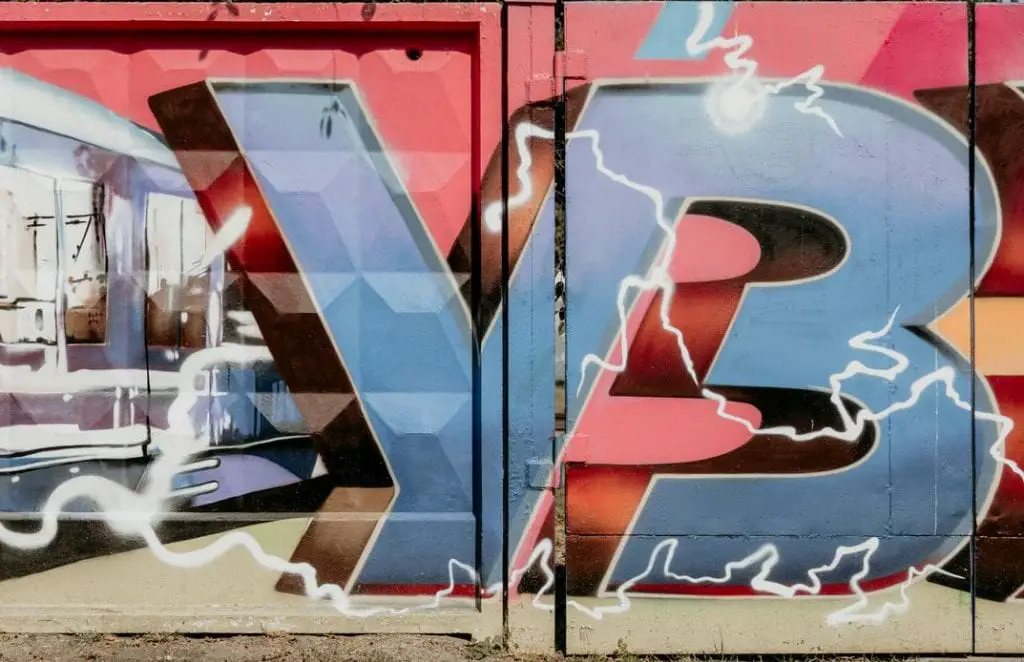
Graffiti lettering has come a long way since its inception and has become more popular over the years. Once a common practice for gritty street artists, graffiti has finally found acceptance even among the common people of the world today. In the past, the only way to learn graffiti was to rely on the word of much more experienced artists. The methods varied widely and there was less focus on basics. We have gone through the same ordeal but have now compiled a list. An extensive and in-depth list of things that one must focus on while learning this art form.
How To Draw Graffiti Letters?
We will start by introducing you to the basics and how crucial they are to progress in your mastery of the craft. We will start off with cap control and cap selection, two things you must familiarize yourself with before moving onto other things. Then a short overview of letter structure, something that can make or break your art, and finally, how it impacts your final products. After that, we dive into the world of originality and how you can use existing tropes to make one of your own. We also shed a light on how the trade works and what you can do to get a strong footing.
1. Can Control
Arguably the most important aspect of graffiti can control is something that is often ignored by novices. Not only does the can control help you in the execution of your etchings but also a bit of flair and pizzaz to it. A drip here or there or an off-color executed in a tasteful manner can bring a lot to the table.
At first, you will not be able to get the results that you want as painting artistically, and painting a fence or chair are very different things. Artisanal coloring takes more precise strokes or sprays in our case and needs to be practiced a lot. We recommend getting a good quality spray that will help you immensely. Use a fat cap for gooey sprays as this helps in minimalizing spillage on the artwork.
The spray usually comes out in a pattern of widespread dots instead of being consistent like acrylic paint on canvas. This gives you the unique advantage of blending colors in a way that both visible and overlapping in nature. This can also create gradients and textural feel in the piece. This is the first part of the answer to ‘How to draw graffiti letters?’
High pressure vs Low-pressure cans
How you move your hands will depend on whether the can is high pressured or low pressured. High pressure can release a higher amount of paint and if you move your hand slowly, you will get a lot of drips. Similarly, if you are too fast with a low pressure can, your lines will light and sparse. These are not hard and fast rules but only guidelines as to how you can get the best results. Graffiti is an artisanal rebellion and you should take the off-beat path but before knowing that you must know the rules too.
2. Letter Styling and Structure
Although very subjective in nature, the structure and styling of the letters are one of the fundamentals of graffiti. They make an excellent starting point for people coming into graffiti without any sort of training in arts. Most of the letters have a shape and form and different styles convey things differently. It is important that one picks a style that reflects who they are. They can make your graffiti fun and light or dark and morbid, depending on what you want to convey.
It is best that you make yourself adept in various styles so that you can convey what you want to in any kind of situation. It is good to explore before you commit yourself to certain stylings. Try to see various artworks by different artists and make a list of those that resonate with you the most. Figure out their lettering styles and how they morph structures to their will to make the pieces. This will help you in learning the structure and appreciating what different structures bring to the piece. Mix and match and find what you like.
Tagging, bombing, and straight lettering are some concepts that you must know. Tags get you notoriety or publicity very quickly, especially if you don’t have a permit to work on the wall. They are also your signature and calling card so make sure you spend a lot of time thinking about it.
Many styles are regional too, for example, Philly style was more tall and thin letters while the cholo style of the west coast is more calligraphic and ornate in nature. The region now has barely any significance over the art style due to the internet. Many people can now download a pic of the graffiti in any corner of the world and learn or replicate wherever they are. “How to draw graffiti letters?”- This is how.
3. Color Theory
This is where the technical and advanced techniques come into play. As in painting, graffiti is also painting, it’s just that the canvas is different. This also includes fills. This is how you fill out or color the lettering so that it becomes what it is finally. You can run wild with your ideas and have blended patterns that give your art a unique appeal.
At a basic level, color theory is how you think about your primaries – red, yellow, and blue; the secondaries – green, orange, violet, and tertiaries like blue-green, red-violet, yellow-green, etc. This is just the basic color wheel or chart. It is best that you first restrict yourself to these colors before breaking the rules. You must learn how they interact and give rise to new and interesting palettes. The colors can also be layered in a multi-textural way to get new designs, thus, it is best that you know and understand these colors very well before going to others.
Black and white can be two good colors to start. Black for outlining and white for highlighting have become the industry standard now. They add depth and contrast to your art and should be used cautiously to avoid more contrast or depth than needed.

4. Extras
Making a work looking a 3-D pic or putting a shadow behind your piece can give the graffiti a real sense of space. What this does is play games with your mind and make it perceive as something it is not. This is a great way to set your graffiti apart from others.
Think of these tricks as a frosting over a cake. It sure makes it look good but if the cake underneath is not up to the mark, nobody cares about the frosting either.
5. Backgrounds
It is necessary that you take into account the background you will spray paint on but also how you can manipulate the background and give an edge to your graffiti. Uneven background can be a great source of inspiration and can really help if you want certain parts of your artistic composition to pop out. When someone asks how to draw graffiti letters, we might give them the know-how. But the real-world application is starkly different and can have varied results.
To make sure that they are using their background to its maximum effect it is of paramount importance that you first draw a 3D outline of your whole composition. This way, you can get an idea of how your background might affect your final product.
Filling out space behind the letters is also a great way to make the whole piece look much more cohesive. This makes the piece look consistent and fluent.
6. Tips and Tricks!
If you are going to paint the walls at night, it is best that you have a jacket on even if it is summer. At night, a little breeze can cause cold. Bad health is the last thing that you need when doing graffiti.
Always wear shoes because you might be painting on a rough surface and might need to climb a ledge to paint the upper portion. Or you might have a run-in with the law and need to run. Many classic tricks like the ‘Can Stomp’ cannot be performed in flip-flops.
Can Stomp is when you stomp the can so that it becomes a pancake. This is done so that you can get a bit of more ink out of it for your piece. Always place the can upside down or sideways for doing this. The reason for this is that the bottom lip of the can is very strong and unlikely to break if you apply pressure.
Now, hopefully, when someone asks you how to draw graffiti letters, you will have a great answer. Keep practicing and one day you will surely have the art down. Everyone has setbacks, but it is how you overcome them that makes you great. Follow other graffiti artists and try to meet some people in the local scene too. Local clout is very important and can be a great segway into many things.